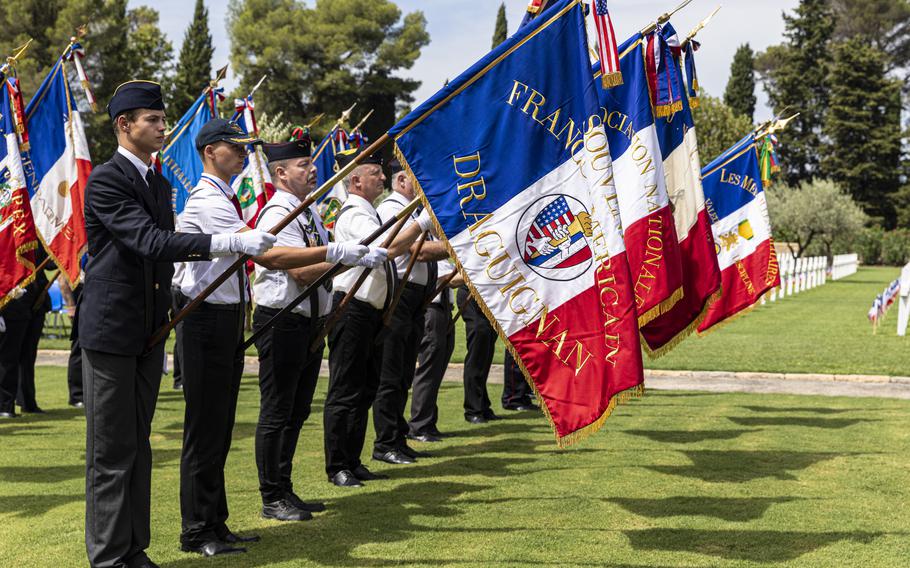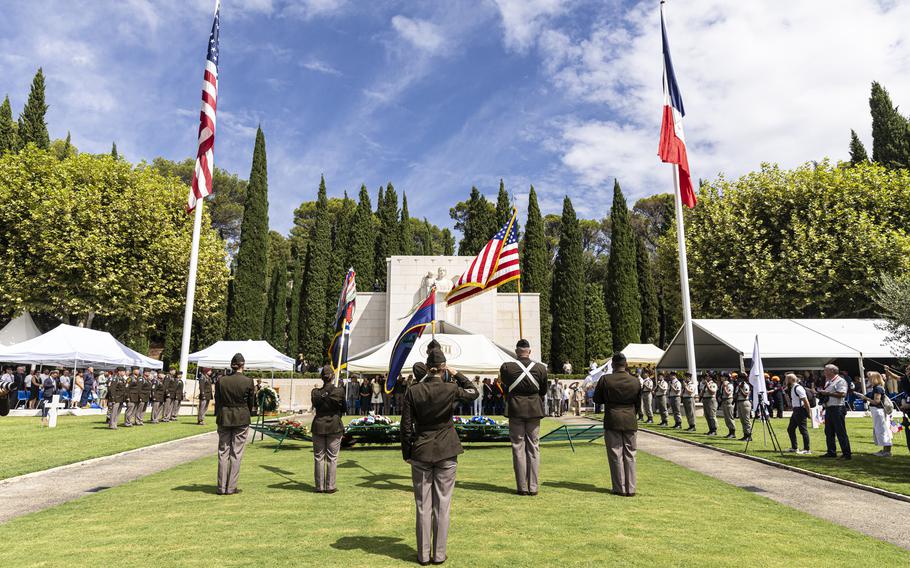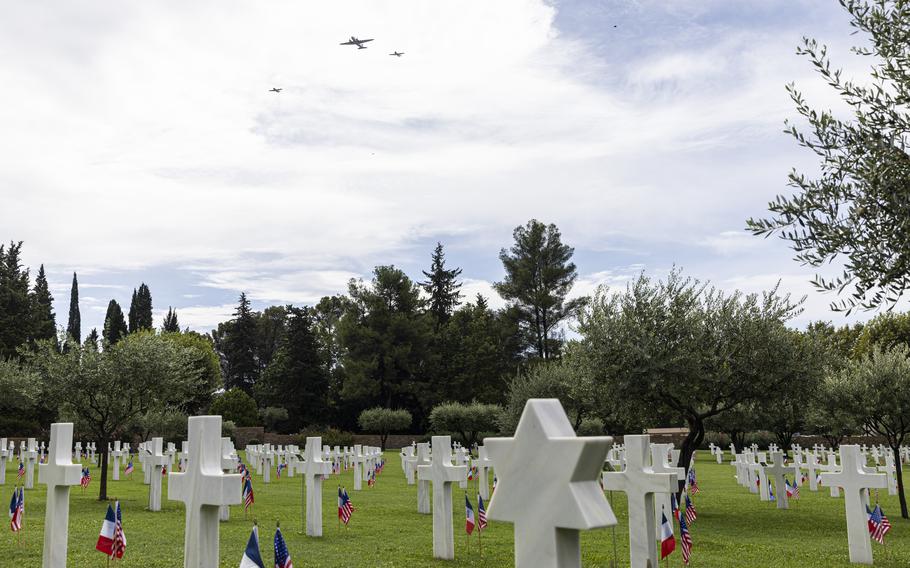
A French color guard salutes at the end of a ceremony, Aug. 16, 2024, at the Rhone American Cemetery in Draguignan, France. The event was held in honor of the 80th anniversary of World War II's Operation Dragoon, which liberated southern France from the Nazis. More than 1,000 Americans are buried or memorialized at the cemetery, most of whom died in the August 1944 campaign. (Mike Shipman)
U.S. troops who fought and died during the Allied landings in southern France during World War II received an 80th anniversary tribute at a ceremony Friday in the town of Draguignan.
Several hundred attendees braved a morning of heavy rain to pay tribute to the roughly 900 Americans buried at the Rhone American Cemetery and the approximately 300 others memorialized on its Wall of the Missing.
Most of those Americans were lost during the fighting of Operation Dragoon, often referred to as France’s “other D-Day.”

U.S. soldiers play Taps during an anniversary memorial at the Rhone American Cemetery in Draguignan, France, on Aug. 16, 2024. Most of the over 1,000 Americans buried or memorialized at the cemetery died in World War II during the liberation of southern France in August 1944. (Mike Shipman)
The operation to liberate southern France in August 1944 was key to defeating the Nazis in Europe but is often overshadowed by the Normandy landings, which occurred two months earlier.
“The liberation of southern France is not as well-known as other operations, but it is no less important, and the sacrifices were no less,” Johnny Matherne, the Rhone American Cemetery superintendent, said in a statement Friday from the American Battle Monuments Commission, which maintains the site.
Dignitaries who spoke at the ceremony included U.S. Army Brig. Gen. Mike Wallace, deputy commanding general for the 36th Infantry Division, and Denise Campbell Bauer, the U.S. ambassador to France and Monaco.

World War II aircraft fly over a ceremony Aug. 16, 2024, at the Rhone American Cemetery in Draguignan, France, commemorating the 80th anniversary of Operation Dragoon. More than 1,000 Americans are buried or memorialized at the cemetery, most of whom died in World War II during the liberation of southern France in August 1944. (Mike Shipman)
At the conclusion of the remarks, representatives of the families of the fallen American soldiers placed wreaths, as did officials from the ABMC and four countries.
Operation Dragoon, which involved assaults by land, sea and air, began on Aug. 15, 1944, with the aim of recapturing the ports of Marseille and Toulon from German forces and trapping the German 19th Army.
After about a month, the Allies liberated most of southern France and linked up with troops from the Normandy landings in the northwest.

Denise Campbell Bauer, the U.S. ambassador to France, places a wreath at the Rhone American Cemetery in Draguignan, France, Aug. 16, 2024. The event marked the 80th anniversary of Operation Dragoon, the Allied effort to liberate southern France from the Nazis in August 1944. (Mike Shipman)
In stenographic records published after the war, Nazi leader Adolf Hitler called the day Operation Dragoon began the worst day of his life.
The main ground force for the operation was the U.S. 7th Army.
U.S. 12th and 15th Air Forces, plus British and French air units, rendered vital airlift and tactical air support throughout the operation.
On Wednesday, a statue of Maj. Gen. Robert Tryon Frederick, the American commander of airborne troops in Operation Dragoon, was unveiled in nearby La Motte, the first Provence village liberated.
Frederick, who led a unit dubbed “the Devil’s Brigade,” was the subject of a 2006 biography titled “The Last Fighting General.”
The Amazon description of the book says he “pioneered racial integration on army training bases, devised training regimens used throughout North America, and left a record that would seem mythical if not documented.”
Rhone American Cemetery is located along the route where the U.S. 7th Army drove up the Rhone River valley.